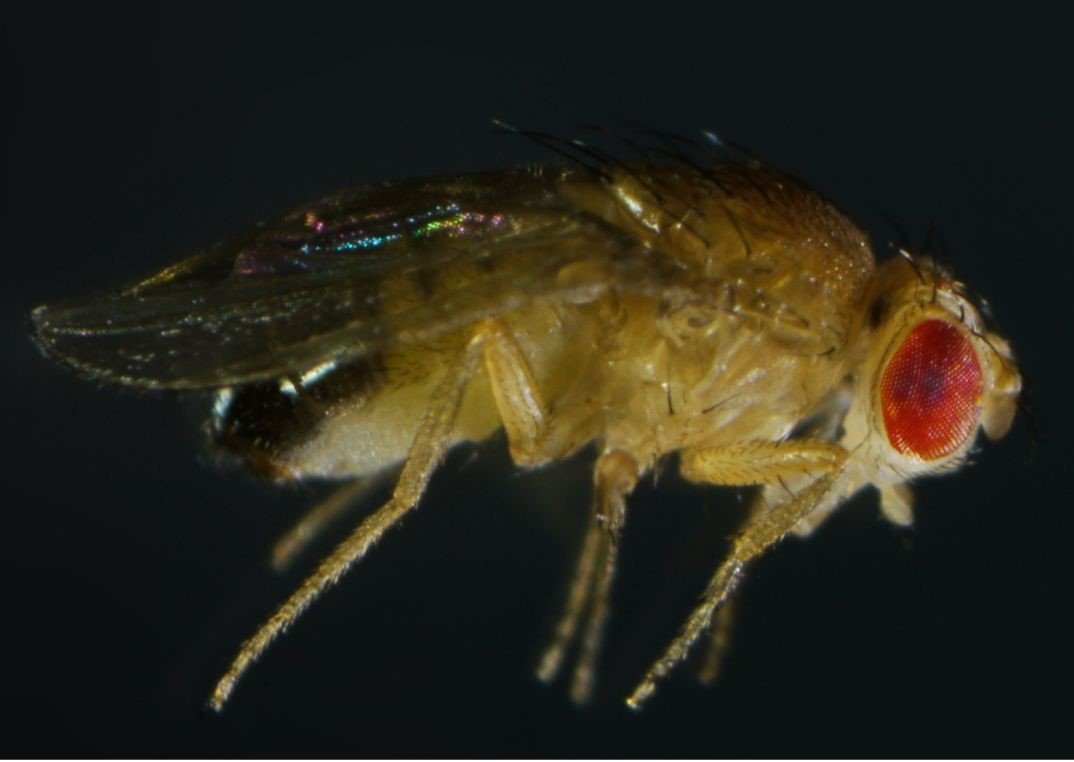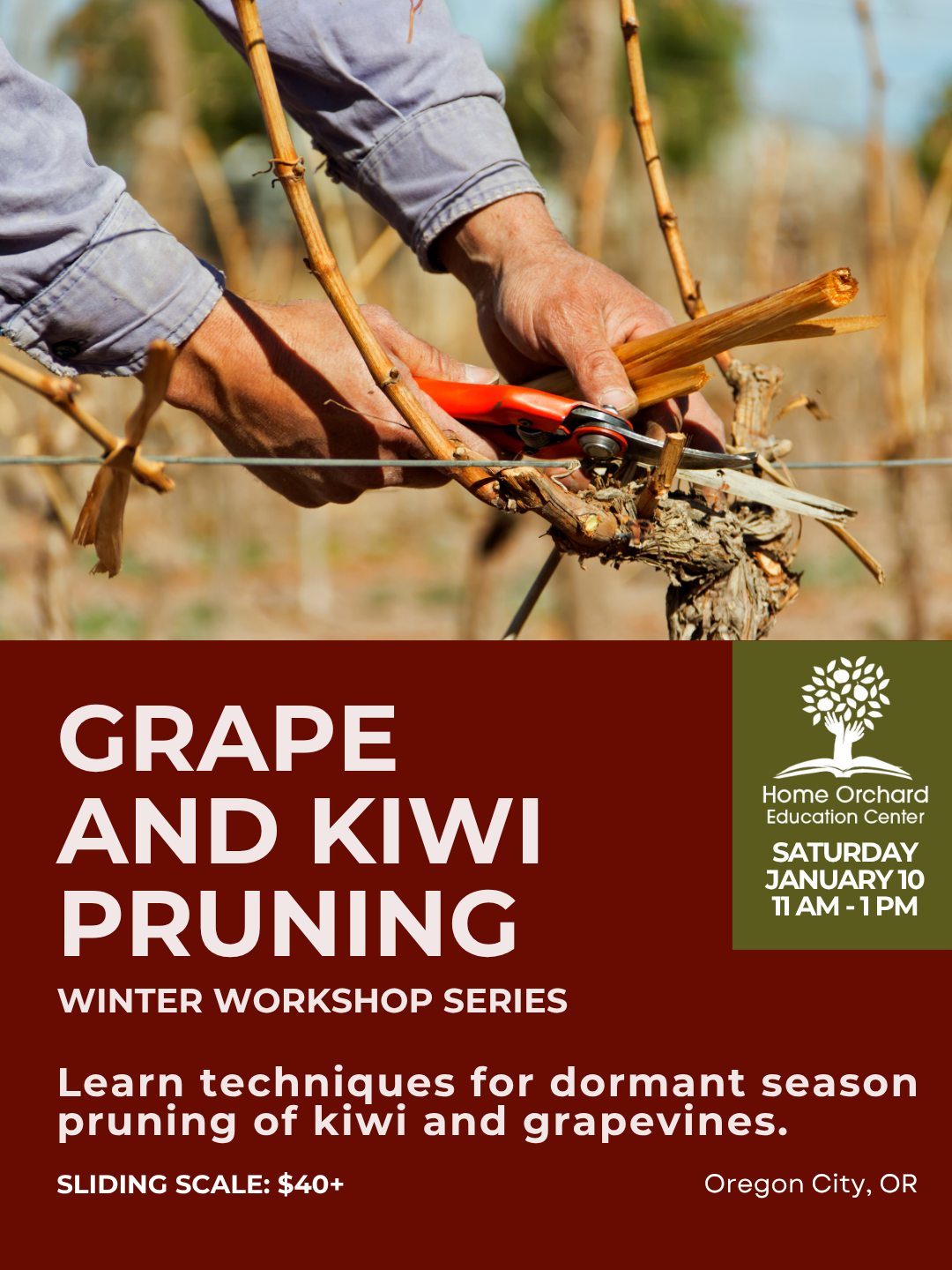Mushy Berries and Infested Fruits?
Spotlight on Spotted Wing Drosophila
How does a new fruit grower know where to begin when it comes to pest control, and which damaging orchard critters should command a piece of your valuable attention?
Depending where you live and what you grow the answer will vary, as every region comes with its own list of pests and diseases that are likely to inflict the most damage.
Before we dive in to talk about today’s featured insect, we’d like to help you set the foundation for responsible pest & disease management practices by encouraging you to always proceed with care when designing your plan of attack (or defense).
Many food growers are so nervous about the possibility of pests or disease, that they jump right in, guns blazing, praying and applying anything and everything they can get their hands on. Not only can this heavy handed “kill them all” approach waste time and money, it can also disrupt the balance of your orchard, sometimes creating new or bigger problems.
Don’t just assume a specific pest or disease will be an issue for you because you read somewhere that a person a few states away had a certain experience. It’s important to do a little research and learn which problems are the most common in your specific region, with the specific types of food you are growing, for people using similar growing practices.
So slow down, and ask your more experienced neighbors & farmers what types of pests and diseases they encounter and what methods of control have worked for them.
With that in mind, today we introduce you to a common pest that has spread to almost all regions of the continental U.S. called Spotted Wing Drosophila (Drosophila suzukii).
Spotted Wing Drosophila (SWD for short)
Drosophila is a genus of flies commonly referred to as fruit or vinegar flies for their tendency to gravitate towards ripe fruits.
Spotted Wing Drosophila is considered to be a major pest in the fruit and berry industry. This tiny flying foe can easily ruin your entire crop by inserting maggot producing eggs just under the skin of your fruits. Gross. To make matters worse, they prefer healthy, nearly ripe fruits. So your crop may look perfect and just about ready to harvest, and then BAM! Wrinkled skin & juicy dripping ruined fruits. How. Rude.
Spotted Wing Drosophila targets a wide range of mostly soft, thin-skinned fruits, both cultivated and wild. Examples include:
Caneberries, Figs, Stone Fruits, Blueberries, Strawberries, Grapes, Bush Honeysuckle, Elderberry, Poke Berries, Autumn Olive, and other berries that ripen in late summer. The softer and juicer the fruit, the more appealing to SWD.
Selecting Plants For Success:
An early maturing variety may make it to harvest before SWD mating season comes into full swing, while a later ripening variety of the same type of fruit will be more susceptible to SWD damage.
Thicker skinned varieties may also fair a bit better, as SWD prefer the softest and thinnest fruits they can find.
Now you know there might be a very rude, very tiny fly flitting around your fruit who might leave tiny maggots in your precious crop. What to do!?
Monitor, Lure, Trap, & Plan
Remember how we talked about waiting to create a plan of attack until you know there is actually a problem to begin with? In order to find out if SWD is present, you will need to do a little bit of monitoring in the form of careful observation. To do this, you will set out baited traps. Keep in mind, these traps are technically intended to monitor for the presence of SWD, and can provide a small amount of population control (if you use a lot of them) but they are not a complete solution. Here in the HOEC Community Orchard, we make our own traps and set out ALOT of them, so they do provide us with some amount of control above just functioning as a monitoring system.
Homemade Traps:
We make our own simple traps from plastic cups with lids. If you don’t want to create new waste, ask your neighborhood group or online community page so save their cups for you!
First, we poke 20-30 tiny holes around the cup near the top with a small nail or wood burning pen with a tiny tip. Tiny enough for a fruit fly to get through but not large enough for other insects. Next, we poke 2 slightly larger holes in each side of the cup and tie a piece of twine through each hole to make a hanging loop. (see the photo for reference). It might seem easier to poke holes for SWD entrance in the lid of the cup, but we found that too much rain finds it’s way in and the bait becomes diluted, so stick to the sides.
Store Bought Traps:
Effective, reusable traps and lures are easily found online nowadays if you don’t want to make your own. Brands that have shown in recent field tests to be effective and available to the public are, Scentry and Trécé. Neither are not affiliate companies.
Homemade Baits - What To Put In The Trap:
Apple Cider Vinegar, Red Wine, & Unscented Soap.
Apple cider vinegar is an affordable and effective bait, and if you are working in an orchard like we are, you can even make your own. We use straight apple cider vinegar, but adding some sweet cider or cheap red wine can increase your catch rate, and a few drops of unscented liquid soap will help trap the flies in the liquid.
Like to experiment?
Red wine and actively fermenting yeasts have shown to be very effective as well, so don’t be afraid to explore the internet for more recipes. Here are a few combinations to get you started:
56% Grape Juice, 37% Apple CIder Vinegar, 6% Splash of “95% Ethanol”
68% Water, 25% Red Wine, 5% Molasses, 2% Apple Cider Cinegar, 1 tsp. Unscented Dish Soap.
Thy a few different combos and see which one catches the most!
When, Why, Where?
When to put out traps:
Early spring before most soft skinned fruits begin to ripen.
Where to put them:
Best practice placement is on the North side of the row at about mid-canopy level. Find a spot nestled within the foliage, as close to fruiting areas as possible.
How often to check them:
As often as possible, but don’t beat yourself up if you only get out there once a week. Keep checking regularly until all soft skinned fruits have been harvested.
What are you looking for:
In the traps: Adult flies.
They will be tiny, so it might help to pour the liquid out into
a shallow dish.
Tip: When you refill or dispose of the liquid
from your trap, don’t dump it near your crop, or it will draw
SWD away from your traps.
In the fruits: Small white maggots / larvae.
Pick a few fruits & place them in a clear jar.
Pour in one cup of water and 2 tsp salt.
Let sit for 10-15 minutes and then ask someone
with good eyes to look for small white maggots
floating in the water.
What Now?
Keep It Clean
Good orchard sanitation is key to preventing the overwintering of SWD (as well as many other pests and diseases). Sanitation in the garden or orchard generally refers to the practice of regularly and promptly removing fallen fruits and debris all times of year as applicable. This may be contrary to your practices is you are a “chop & drop” fan, but we proimise you don’t want to drop infested fruit or foliage onto your orchard floor if you hope to grow organically. Don’t just move infected fruit to another section of your garden either, unless you keep an active and very hot compost pile. Moving infested fruits will just spread eggs and maggots around. Some other options are to burn infected fruits, or transfer them to your local compost facility. Our local facility keeps gigantic towering piles as tall as your house, that reaches internal temperatures hot enough to kill most pests.
Keep It Dry:
Allowing vegetation to dry in between watering, creates a slightly less desirable environment for SWD. Consider reducing irrigation, and/ or switching to drip irrigation vs. wetting the leaves of the plant.
Keep It Cool:
Chilling fruit as soon as it is picked can slow or even stop the growth of any larvae inside of the fruit. Freezing it will kill the larvae.
Keep It Covered:
While unreasonable on a large scale, home gardeners who only have a handful of smaller plants, might consider 1mm insect exclusion netting over a structure covering their plants once the fruit has set. Bee warned that netting when flowers are still in bloom could deter friendly pollinators and prevent them from doing their job.
Keep Ahead Of Schedule:
Pick fruit that continues to ripen off the bush just before it’s fully ripe. Pick fruit that does not continue to ripen off the plant frequently, even if it means making a couple of trips back to harvest the same plant as the other fruits catch up. SWD prefers the softest fruits that are perfectly ripe and ready to eat, so harvesting them slightly early can help save them from infestation.
The Ultimate Sacrifice:
If SWD pressure is really bad, consider pulling out the pruning shears and sacrificing the late season crop on everbearing fruits that boast more than one harvest. You will lose the crop, but you will also not support a growing SWD population or risk more infestation on already troubled plants.
Enlist The Help Of Beneficial Critters!
Consider Poultry:
Letting poultry such as chickens or guinea fowl free range in the orchard when reasonable, can go a long way towards the reduction of overwintering pest populations of all kinds. Not only do poultry eat up fallen and potentially infected fruits, but they are also exceptionally skilled when it comes to hunting for bugs and hidden larvae.
Invite Hummingbirds:
Did you know these beautiful little creatures don't only dine on nectar? A good portion of their diet also involves tiny invertebrates that must be small enough to swallow while in flight - just like SWD! In addition to placing feeders near your most vulnerable crops, make sure you also provide flowering nectar sources that keep them patrolling near your sensitive fruits and keep those feeders clean and full.
Encourage Predatory Insects:
Some of the newest and most exciting research when it comes to the identification of insects that might be effective for controlling SWD, has led scientists to a tiny parasitoid wasp called Ganaspis brasiliensis. This wasp is from Asia, but has already been found here in the Pacific Northwest. This is a very important discovery for fruit growers! Scientists will study Ganaspis releases a bit longer, and hopefully very soon, these little helpers will be widely available. Until then, to help encourage these helpful resident insect populations, consider providing habitat and planting forage for a wide array of beneficial insects in the form of a cover crops, end caps, or if you have the space, dedicate an entire strip to supporting these little creatures. Allowing habitat for beneficial insects will increase predation of other fruit damaging pests as well.
The next “Orchard Pest and Disease ID and Organic Management Workshop” is coming up on May 13th, 2023! There will be a fall date announced soon as well, so stay tuned!
Resources & More Information
How do I manage spotted wing drosophila in my home garden? Cornell University.
Hummingbirds may reduce SWD. Cornell University Cornell University. Research in raspberries at Cornell AgriTech over the last four years has shown promise as an alternative tactic to reduce the impact of SWD on berries.
Biocontrol of Spotted-wing Drosophila OSU Extension
Could Predatory Flies Provide Early Season Control of Spotted Wing Drosophila in Red Raspberry?), WSU. Predatory dung flies may reduce numbers of the SWD in home orchards.
A biocontrol boom: The U.S. Department of Agriculture approves releases of one SWD-specific biocontrol:
https://www.goodfruit.com/green-light-for-biocontrol/























